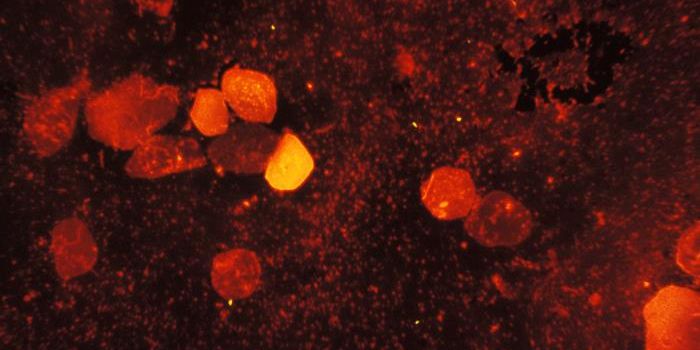Viruses are quite simply everywhere in our environment; it’s estimated that they even outnumber bacteria with an estimated population around 1031. Giant viruses were first described only a few years ago, upending the idea that viruses are small and simple. They have interesting codes in their massive genomes, including the ability to make proteins. Researchers at the U.S. Department of Energy Joint Genome Institute (DOE JGI), have now found another group of giant viruses they called Klosneuviruses. The video below summarizes the work, which was reported in Science.
This new virus showed the researchers that the massive genome of the virus was built over time as a smaller virus acquire new features and continued adding them in. "The discovery presents virus evolution for us in new ways, vastly expanding our understanding of how many essential host genes viruses can capture during their evolution," explained one co-author of the work Eugene Koonin, a evolutionary and computational biologist at the National Institutes of Health. "Since protein synthesis is one of the most prominent hallmarks of cellular life, it shows that these new viruses are more 'cell-like' than any virus anyone has ever seen before."
By studying the genome of a virus picked up in a wastewater treatment plant, the investigators found that this one had features that were unique among viruses. "We expected genome sequences of nitrifying bacteria in the microcolony sequence data," Woyke said. "Finding a giant virus genome took the project into a completely new and unexpected, yet very exciting direction."
Related: Another Giant Virus Emerges From Melting Siberia
The virus genome featured over 20 tRNAs and a variety of translation factors and tRNA modifying enzymes, previously unseen in viruses. This virus likely added parts to its genome after infecting different hosts. "In this scenario, a smaller virus infected different eukaryote hosts and picked up genes encoding translational machinery components from independent sources over long periods of time through piecemeal acquisition," explained lead author Tanja Woyke, DOE JGI Microbial Genomics Program.
The researchers used a metagenomic analysis to learn that the Klosneuvirus group derived from a novel viral lineage linked to Mimiviruses. "Mining sequence data in DOE JGI's Integrated Microbial Genomes & Microbiomes system, which houses thousands of metagenomes, allowed us to find evolutionary relatives of our Klosneuvirus," said first author and JGI postdoctoral researcher Frederik Schulz. "This amounts to evidence that these giant viruses are not a separate domain of life, and they did not derive from a cellular ancestor.
This is probably not the last we’ve heard of giant viruses, however, and the biological function of these genes is still not known. Koonin is awaiting the discovery of even more giant viruses through metagenomic data. "I'm quite confident that the current record of the genome size of giant viruses will be broken," he said. "We are going to see the real Goliaths of the giant virus world.”
You can check out a talk from Schulz on his work in this video.
Sources: AAAS/Eurekalert! via DOE JGI, Science








